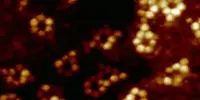Scientists have made remarkable progress in creating quantum events in mechanical systems during the last decade. Researchers have successfully created quantum states in macroscopic mechanical items, which seemed inconceivable only fifteen years ago.
Scientists have been able to chill these mechanical oscillators down to their lowest energy level close to the quantum limit, “squeeze” them to lower their vibrations even further, and entangle them with each other by coupling them to light photons, known as “optomechanical systems.” These advances have created new prospects in quantum sensing, compact storage in quantum computers, fundamental quantum gravity tests, and even the quest for dark matter.
Scientists have difficulty in order to efficiently run optomechanical systems in the quantum phase. On the one hand, mechanical oscillators must be appropriately separated from their surroundings in order to reduce energy loss; on the other hand, they must be well-coupled to other physical systems such as electromagnetic resonators in order to be controlled.

To achieve this equilibrium, the oscillators’ quantum state duration must be maximized, which is influenced by their environment’s thermal fluctuations and oscillator frequency instabilities—a concept known in the field as “decoherence.” This is a chronic problem in systems ranging from massive mirrors used in gravitational wave detectors to small trapped particles in high vacuum. Opto- and electro-mechanical devices still have larger decoherence rates than other technologies such as superconducting qubits or ion traps.
Tobias J. Kippenberg’s research at EPFL has now tackled the problem by constructing a superconducting circuit optomechanical platform with ultra-low quantum decoherence while maintaining significant optomechanical coupling, resulting in high-fidelity quantum control. The findings were just reported in Nature Physics.
“In a nutshell, we demonstrated the longest quantum state lifetime ever achieved in a mechanical oscillator, which can be used as a quantum storage component in quantum computing and communication systems,” says Amir Youssefi, the project’s principal investigator. “This is a significant accomplishment that will have an impact on a wide range of audiences in quantum physics, electrical engineering, and mechanical engineering.”
A “vacuum-gap drumhead capacitor,” a vibrating device made of a thin aluminum sheet hung above a trench in a silicon substrate, is the fundamental component of the breakthrough. The capacitor acts as the oscillator’s vibrating component and also forms a resonant microwave circuit.
The scientists drastically decreased mechanical losses in the drumhead resonator using a revolutionary nanofabrication approach, yielding an exceptional thermal decoherence rate of only 20 Hz, corresponding to a quantum state lifetime of 7.7 milliseconds—the longest ever achieved in a mechanical oscillator.
Because of the amazing reduction in thermally induced decoherence, the researchers were able to apply an optomechanical cooling approach, resulting in an impressive 93% fidelity of the quantum state occupation in the ground state. Furthermore, with a value of -2.7 dB, the team achieved mechanical squeezing below the zero-point fluctuation of motion.
“This level of control allows us to observe the free evolution of mechanical squeezed states while preserving its quantum behavior for an extended period of 2 milliseconds, thanks to the exceptionally low pure dephasing rate of only 0.09 Hz in the mechanical oscillator,” says Shingo Kono, who contributed to the research.
“Such ultra-low quantum decoherence not only improves the fidelity of quantum control and measurement of macroscopic mechanical systems,” says Mahdi Chegnizadeh, another member of the research team. “The platform’s significantly longer storage time compared to superconducting qubits makes it an ideal candidate for quantum-storage applications.”
















